
Cureus Delineation of Subarachnoid Cisterns Using CT Cisternography, CT Brain Positive and
The subarachnoid cisterns, or basal cisterns , are compartments within the subarachnoid space where the pia mater and arachnoid membrane are not in close approximation and cerebrospinal fluid (CSF) forms pools or cisterns (Latin: "box"). As they are interconnected, their patency is essential for CSF circulation.

MRI Brain ambiens cistern anatomy Radiology Anatomy Images Mri brain, Mri, Brain anatomy
The interpeduncular cistern is located at the base of the brain at the junction where the arachnoid mater stretches between the two temporal lobes, occupying the interpeduncular fossa. Located within this cistern is the optic chiasm as well as some important neurovascular structures which include:.
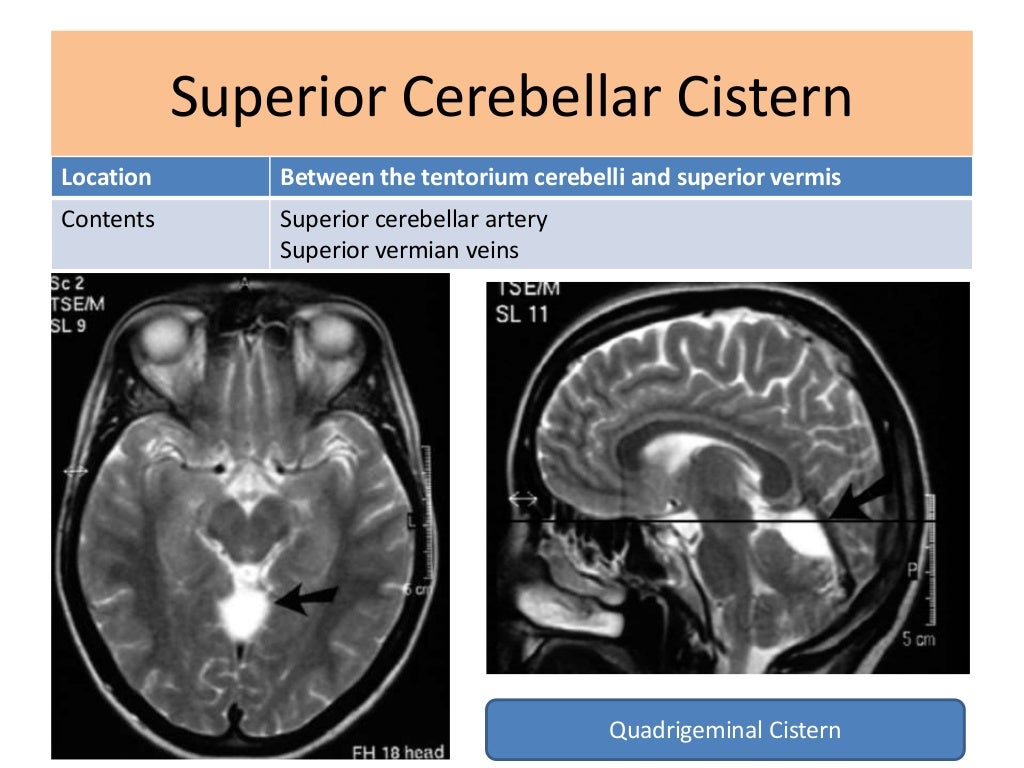
Cisterns of brain and its contents along with its classification and
The ambient cistern is a thin, sheet-like extension of the quadrigeminal cistern that extends laterally around the midbrain and posterior to the thalami. It acts as the connection between the quadrigeminal cistern and the interpeduncular cistern.
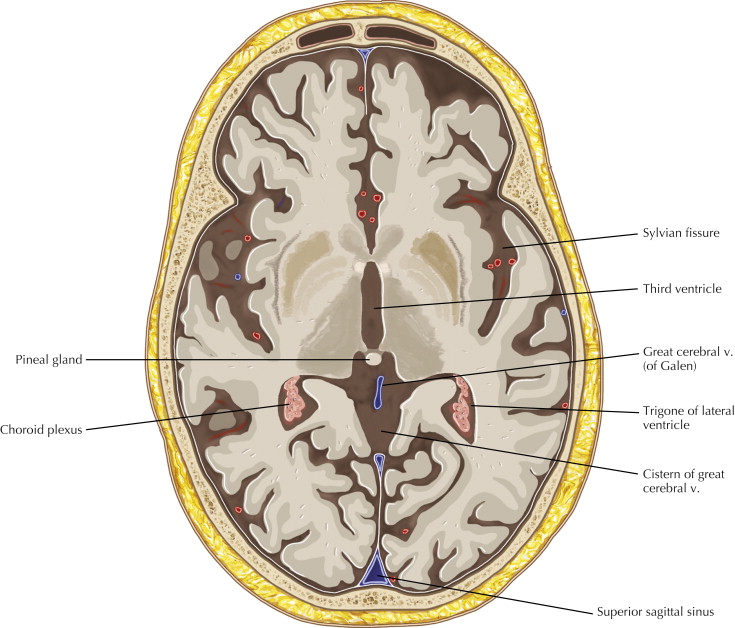
Ventricles and Cerebrospinal Fluid Cisterns Radiology Key
Definition and location of the falx cerebri. The brain is bathed in fluid during life. The name of this substance is cerebrospinal fluid (CSF). It provides the brain with nutrients, allows for solute exchange, and provides basic mechanical and functional support to the organ.
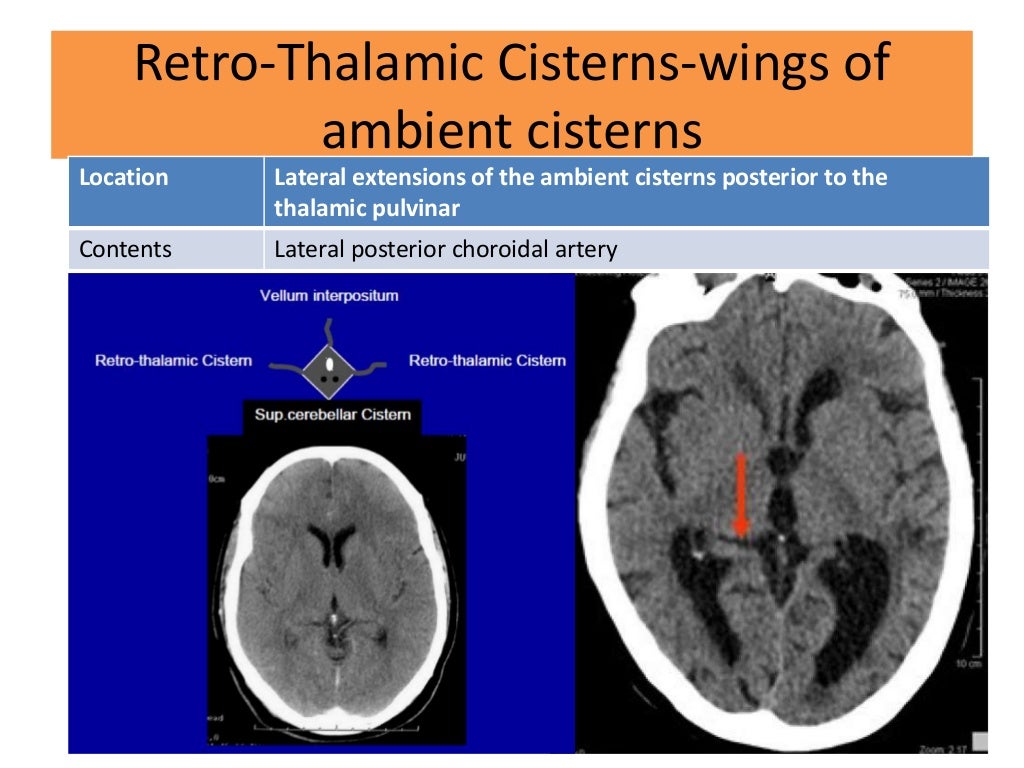
Cisterns of brain and its contents along with its classification and
The subarachnoid cisterns are spaces formed by openings in the subarachnoid space, an anatomic space in the meninges of the brain. [1] The space is situated between the two meninges, the arachnoid mater and the pia mater. These cisterns are filled with cerebrospinal fluid (CSF). [1] Structure

6 Basal Cisterns Anatomy Neupsy Key
Subarachnoid cisterns - bathes the brain, between arachnoid mater and pia mater. Here the CSF is reabsorbed back into the circulation. By TeachMeSeries Ltd (2024) Fig 3 - The anatomical positioning of the ventricles of the brain. Production and Reabsorption of Cerebrospinal Fluid.

Subarachnoid Cisterns Anatomy YouTube
The subarachnoid cisterns are clinically and surgically significant enlarged cerebrospinal fluid (CSF)-filled pockets of the subarachnoid space that transmit important neurovascular structures including cranial nerves and intracranial vessels.
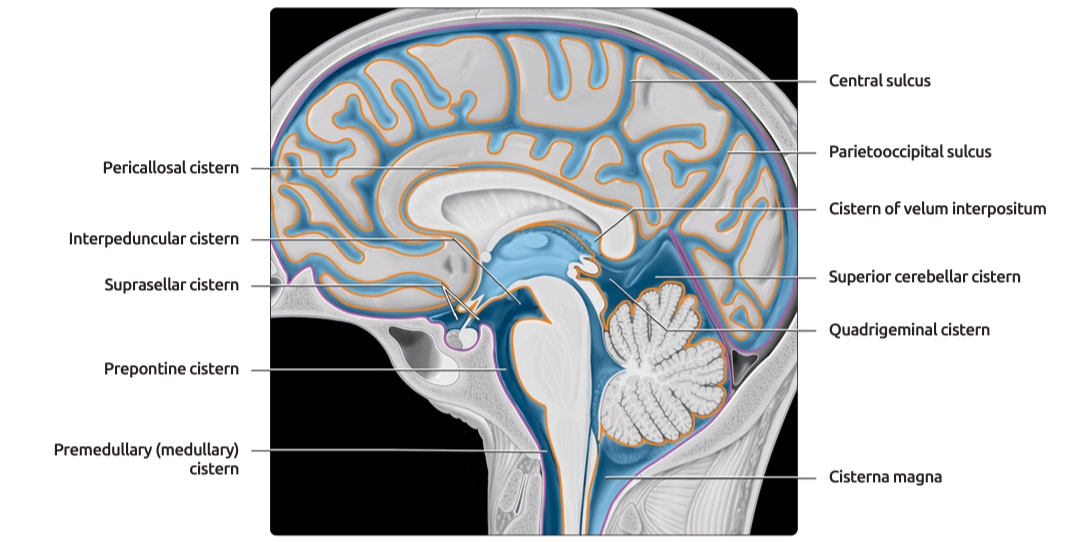
ventricular system overview Brain Imaging
The concept of intracranial surgery in terms of moving from one cistern to another is presented here with particular emphasis on the cisterns in surgical approaches to intracranial vessels and nerves for the treatment of aneurysms, arteriovenous malformations, and for surgery of basal tumors. MeSH terms Brain / blood supply

Normal sagittal midline MRI showing the CSF cisterns. A. Cistern of the laminae terminalis. B
The subarachnoid space is described as a cistern at points where spaces exist between it and the underlying pia mater. At different points around the brain, the cisterns are described with respect to adjacent anatomical landmarks. Notable cisterns include the: suprasellar or chiasmatic cistern; interpeduncular cistern; prepontine cistern

suprasellar cistern anatomy
The interpeduncular cistern is an unpaired CSF-filled subarachnoid cistern located between the cerebral peduncles. It is partially bounded by the leaves of the Liliequist membrane, one of the arachnoid membranes , which separate it from its direct cranial and caudal relations 1.

Blood Can Be Very Bad! How to Read an Emergent Head CT — Downeast Emergency Medicine
Ambient cistern (Figure 6): Located in the lateral aspect of the brain stem. This cistern has a particular surgical importance as it has both supratentorial and infratentorial extensions. Divided by the superior cerebellar membrane, the superior compartment or posterior cerebral ambient cistern houses the posterior cerebral artery, medial and.
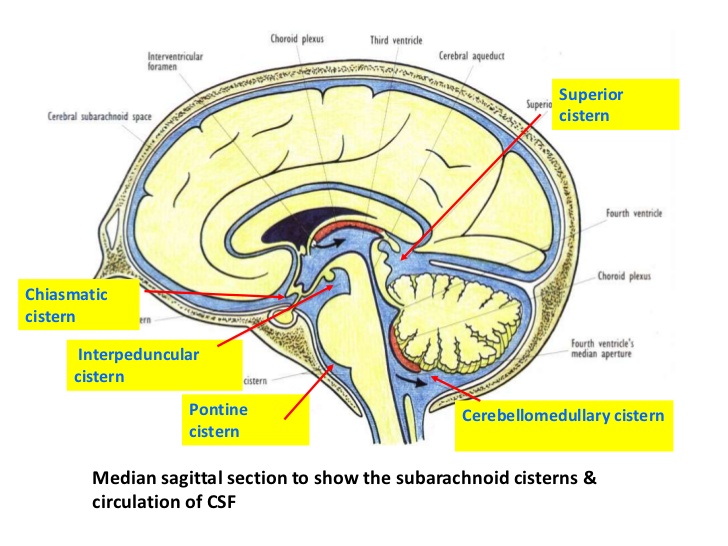
Basal CSF cisternsInterpeduncular cistern RANZCRPart1 Wiki FANDOM powered by Wikia
The prepontine cistern, or simply pontine cistern , is an unpaired CSF-filled subarachnoid cistern located ventral to the pons and dorsal to the clivus. It is bounded by arachnoid membranes which separate it from surrounding cisterns. superiorly the mesencephalic leaf of the membrane of Liliequist, above which is the interpeduncular cistern.

PPT Brain Cisterns PowerPoint Presentation ID2263744
The epidural space in the skull is a potential space, while it is actually present in the spinal cord. The subarachnoid space consists of the cerebrospinal fluid (CSF), major blood vessels, and cisterns. The cisterns are enlarged pockets of CSF created due to the separation of the arachnoid mater from the pia mater based on the anatomy of the.

PPT Brain Cisterns PowerPoint Presentation ID2263744
Cisternostomy is a surgical technique thought of and developed as an option for severe brain trauma treatment. It demands a particular knowledge and skill to microsurgically approach basal cisterns and effectively manipulate their contents. To perform this procedure safely, the anatomy and pathophysiology must be clearly understood. Methods:

2 Ventricles and Cisterns Radiology Key
0:00 / 15:04 Ventricles and Cisterns of the Brain | Radiology anatomy part 1 prep | MRI brain Radiology Tutorials 37.3K subscribers Subscribe 715 20K views 1 year ago Anatomy Tutorials High.
:watermark(/images/watermark_5000_10percent.png,0,0,0):watermark(/images/logo_url.png,-10,-10,0):format(jpeg)/images/atlas_overview_image/452/744UeLdRamXVwT6d4CThA_subarachnoid-cisterns-of-the-brain_english__1_.jpg)
Subarachnoid cisterns Anatomy and clinical points Kenhub
P, Posterior. Brain MRI: coronal T1-weighted cut. 1, Interpeduncular cistern. 2, Hippocampus. 3, Third ventricle. 4, Lateral ventricle. Ambient cistern Brain MRI: sagittal T1-weighted cut. 1, Ambient cistern. 2, Splenium, corpus callosum. 3, Cerebellum. 4, Pons.